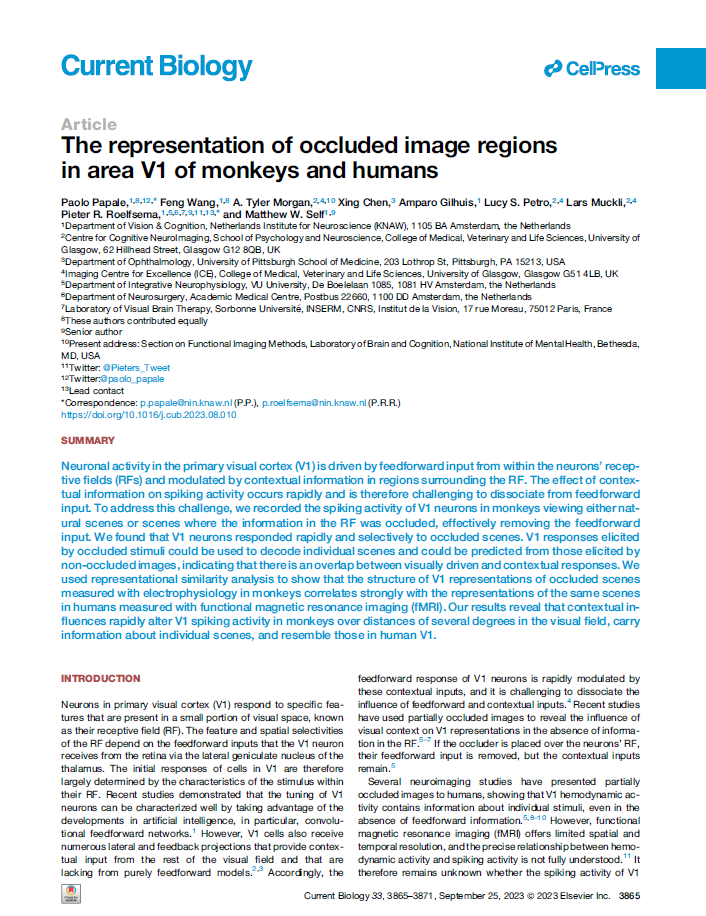Scientific Publications
DBI2 publications
The representation of occluded image regions in area V1 of monkeys and humans
Neuronal activity in the primary visual cortex (V1) is driven by feedforward input from within the neurons’ receptive fields (RFs) and modulated by contextual information in regions surrounding the RF. The effect of contextual information on spiking activity occurs rapidly and is therefore challenging to dissociate from feedforward input. To address this challenge, we recorded the spiking activity of V1 neurons in monkeys viewing either natural scenes or scenes where the information in the RF was occluded, effectively removing the feedforward input. We found that V1 neurons responded rapidly and selectively to occluded scenes. V1 responses elicited by occluded stimuli could be used to decode individual scenes and could be predicted from those elicited by non-occluded images, indicating that there is an overlap between visually driven and contextual responses. We used representational similarity analysis to show that the structure of V1 representations of occluded scenes measured with electrophysiology in monkeys correlates strongly with the representations of the same scenes in humans measured with functional magnetic resonance imaging (fMRI). Our results reveal that contextual influences rapidly alter V1 spiking activity in monkeys over distances of several degrees in the visual field, carry information about individual scenes, and resemble those in human V1.
Pieter R. Roelfsema
10.1016/j.cub.2023.08.010
occlusion, area V1, visual perception, feedback connections, contextual modulation, monkey, human

Research areas
Want to join DBI²?
Browse the vacancies page
Contact details
Radboud University
DBI2 Office
Heyendaalseweg 135
6525 AJ Nijmegen
